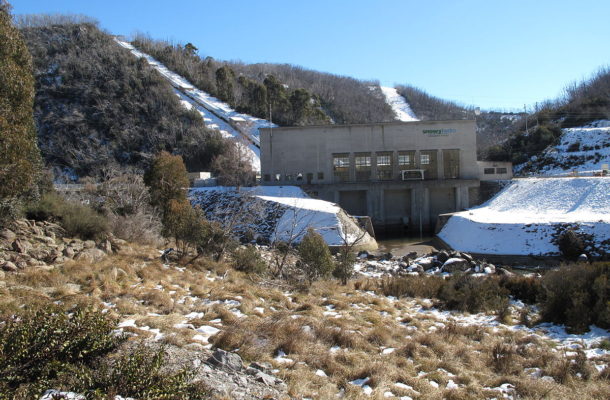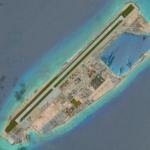Do we even need Snowy II?

The Australian Financial Review reports that Tasmanian Hydro is expected to release a report in the next month or so identifying 4,000-5,000 megawatts of power in pumped hydro schemes at a cost per MW a bit over half the proposed Snowy II project.
This proposal seems to be a better idea than Snowy II, although any more than 300-400MW of additional power will require another Basslink. In fact, 4,000MW would require at least $3-5 billion in new cross straight transmission and perhaps much more, as transmission upgrades would need to extend well into NSW and SA. Snowy II will need smaller investments in transmission but because both capacity an efficiency are lower than the Tasmanian proposal, the cost per delivered Wh will still be higher.
The weakness with both projects is that they are based on existing generation and demand models which are just not relevant to the new paradigm and they require large investments in transmission.
Home batteries are about the same real cost as televisions were at their introduction. If they are taken up half as fast as televisions were, that would mean that in 8 years 70% of residences will have their own battery. Some of them will be 500 W 2-3kWh units, most will be 10-15kWh 5-7kW and some will be multiples. So, to be more conservative, let us assume only 45% of customers have 4kW/10kWh in storage capacity by 2025.
Larger customers who are on peak demand charges have a huge incentive to install batteries to clip 10-20% off peak demand. For hospitals, hotels and similar institutions batteries can complement or even displace emergency generators.
For commercial, industrial or institutional customers, a battery makes money every day through arbitrage whereas a backup generator might make some money every 2-3 years. Again, lets imagine that there are 200,000 non-residential systems with 20kW 50kWh.
This gives us a total of 20 GW (9,000,000 x 0.45 x 4kW + 200,000 x 20 kW) or ten times the capacity of the Snowy II scheme, plus 6 GW from hydro and a minimum of 4 GW from wind and solar, as well as 10GW of gas. This offers a grand total of 40 GW in capacity plus whatever coal is still on the system. Peak demand on the system this summer was just 32GW and future predicted peaks are falling. So why do we need Snowy II?
It should be noted that the nominal hydro capacity of the NEM is 7.9 GW but because of the limitations of Basslink, rarely more than 6 GW can be used at any one time.
Another way of looking at storage capacity is that from now on, a third of new solar installations have a battery and over the next 10 years half the existing customers install a battery. That will be 1.5m batteries only about 8-9 GW.
By then we still expect to have about 15GW of coal and minimum solar and wind production will be 2-4 GW, alongside 6 GW from hydro and 8 GW from gas. This will generate a total supply of around 40 GW and by that time system peak will be down to around 29-30 GW.
It is highly likely that one or two of the proposed SA pumped storage plants will go ahead, as will Kidston, and it is quite likely that Victoria will spend some of its $2b from Snowy hydro encouraging some grid storage here. This means there will probably be another 2GW in 100-400MW blocks around the country. None of them will need more than a few million in grid enhancements.
In addition, most solar and wind farms that are being built now are being built for or fitted with storage to avoid curtailment at periods of low demand or grid congestion during strong winds.
On a national level that will probably bring another 1-2 GW of storage. On a slightly longer time scale 500,000 EVs will offer up to 20 GWh of storage between them.
Considering the situation in Victoria. Ideally two thirds of battery storage will be at or near the load, so by 2022 Victoria alone will probably have 500-1,000MW of behind the meter batteries or power to heat/ice which will reduce peak load.
If Victoria takes its $2bn from the sale of Snowy and called tenders in 2020-21 for big batteries they would probably be about 30% cheaper than the Hornsdale battery. For $2bn they would get close to 3GW of batteries.
With 0.4GW imports from Tasmania, 2.4 GW of gas, 2 GW of existing hydro including continuing access to Snowy, residual wind and solar and limited demand response would offer close to 9GW peak capacity even if all the coal plants closed. It is also quite likely that at the rate that SA is building renewables it will also be able to support Victorian needs.
In summary, except for one or two of the smaller hydro modules in Tasmania, I don’t think either project will go ahead. We don’t need them, they are generally too far from the load and are far less cost effective than small projects like Kidston, the suggested projects near the Victorian grid and the three or four projects in SA which are all near existing loads and grid infrastructure.
Peter Farley is the President of the Victorian Vernier Society and former Deputy President of the Victorian Committee of Engineers Australia. He has also served as a Director of the Inner Melbourne VET Cluster for more than a decade.













Max Thomas
March 9, 2018 at 5:12 pm
Peter Farley’s analysis fits nicely with comments by Dr Ariel Liebman, Deputy Director of the Monash Energy Materials and Systems Institute, who pointed out that decisions will have to be made on where we should build batteries, versus off-river pumped hydro storage, as well as where and how much additional transmission capacity we should build.
This requires an expansion of transmission cost-benefit assessment processes to include cross-state investment that will take place over the next 20-30 years, as we will be connecting unprecedented quantities of new wind and solar farms often far from existing grid locations. Dr Liebman went on to say that failing to take such a national approach will likely result in billions of dollars of stranded assets as different technologies unexpectedly emerge as competitive at various locations at different points in the future.